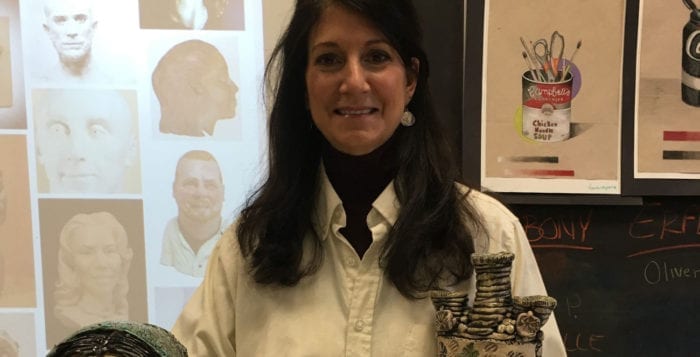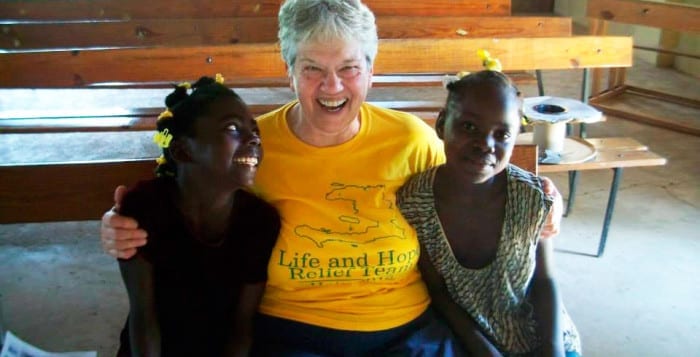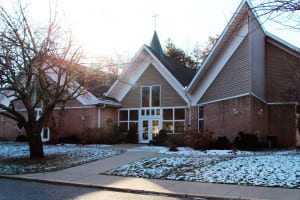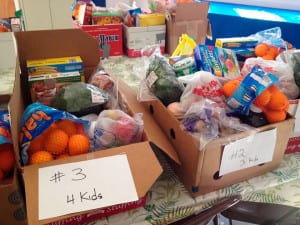Who better to bring vibrancy and revitalization to downtown Rocky Point than a group of local artists? With the support of elected officials, a new nonprofit organization is leading the charge to help enrich, educate and electrify the Rocky Point community and surrounding areas.
The Brick Studio and Gallery is an art collective of more than 20 local artists and instructors with aspirations to grow and develop into a full-fledged community studio and hub.
Spearheaded by Miller Place High School art teacher Julia Vogelle and professional ceramicist Justine Moody, the group blossomed around the time Stony Brook University’s Craft Center and ceramics studio closed for renovations in January 2016, leaving potters and artists without a space to do what they love.

Vogelle and Moody, who shared dreams of opening up a cooperative to bring art back into the community, met in the wake of the Craft Center shutdown and enlisted the help of the “homeless” artists to form the organization.
Since then, the project has grown, culminating in a Kickstarter campaign with an ambitious goal of $18,000 to turn a dream into a reality. With 120 backers, their goal has already been exceeded, raising a total of $18,150.
The money will cover the start-up costs to find a location and equip and supply the studio with 14 pottery wheels, two electric kilns, kiln shelves, clay, glazes and ceramic tools. According to the fundraiser page, the studio “has the potential to begin a renaissance in historic Rocky Point, with other artists and artisans joining in bringing life to other empty buildings” and plans to open in early spring.
“My vision is to have this cultural center energize and bring all the money back into the hamlet,” Vogelle said. “Rocky Point has a lot to offer. People 16 and up can come; we’d have services for students, seniors, veterans and anyone who would like to work. I want to look at Broadway in Rocky Point as ‘artist’s row.’”
In addition to pottery, glass and jewelry making, the studio will be a venue for documentary showings, live poetry, trivia nights and live music.
Moody expanded on the grand vision.
“I think it’s going to become a destination place … I don’t know that Rocky Point has one, and there are a lot of towns here with a tremendous group of creatives who don’t really have a place to call their own,” Moody said.
She’s hoping it could be a place to attract locals during the summer to take lessons, and others from outside the community on Friday nights, saying she envisions big events on weekends and other pop-up events throughout the year.
Suffolk County Legislator Sarah Anker (D-Mount Sinai) believes The Brick has the potential to be a tourist attraction that could boost Rocky Point’s foot traffic and revenue — much-needed since the state built the bypass, which encourages traffic to go around the area, hitting downtown businesses especially hard.
“There are a lot of towns here with a tremendous group of creatives who don’t really have a place to call their own.”
— Justine Moody
“So many of our residents come in from the Long Island Expressway, from Sunrise Highway, and they look to go east from the North Fork, and my hope is that maybe they’ll turn left and go west to experience what Rocky Point and Shoreham have to offer,” Anker said. “There are so many high-level artists that live in the area and this will hopefully give them a way to stay local and promote their craft to the public.”
Anker has been involved in North Shore revitalization plans since 2011, participating with the Rails to Trails project and the clean-up of the Tesla Science Center at Wardenclyffe, and said that art is not just trendy.
“We underestimate how important art is, it needs to be cultivated,” she said. “It’s part of our culture and it has an educational component. It will definitely benefit downtown Rocky Point.”
Councilwoman Jane Bonner (C-Rocky Point), who contributed $100 to the art collective’s Kickstarter campaign, said she’s so excited about the studio and points to Vogelle and Moody’s hard work and dedication.
“They’re very dedicated and committed and they’re not looking for somebody else to solve their problem … grass isn’t growing under feet at all and it’s hard not to pay attention to that,” Bonner said.
As a 30-year Rocky Point resident, the councilwoman is hopeful that the artists can bring people back to downtown Rocky Point and trigger change.
Vogelle feels the same, stating that she believed that the art can bring value to homes and surrounding businesses.
“If you put art into a community, people want to move in,” she said. “If you put music in town, people want to gather around and enjoy it. A cultural center like this always connects with schools in the district and it will also help people realize there’s so much culture that’s hidden. And anyone can get hooked on ceramics — the elderly, veterans, teens. Once you touch mud, you never go back.”








